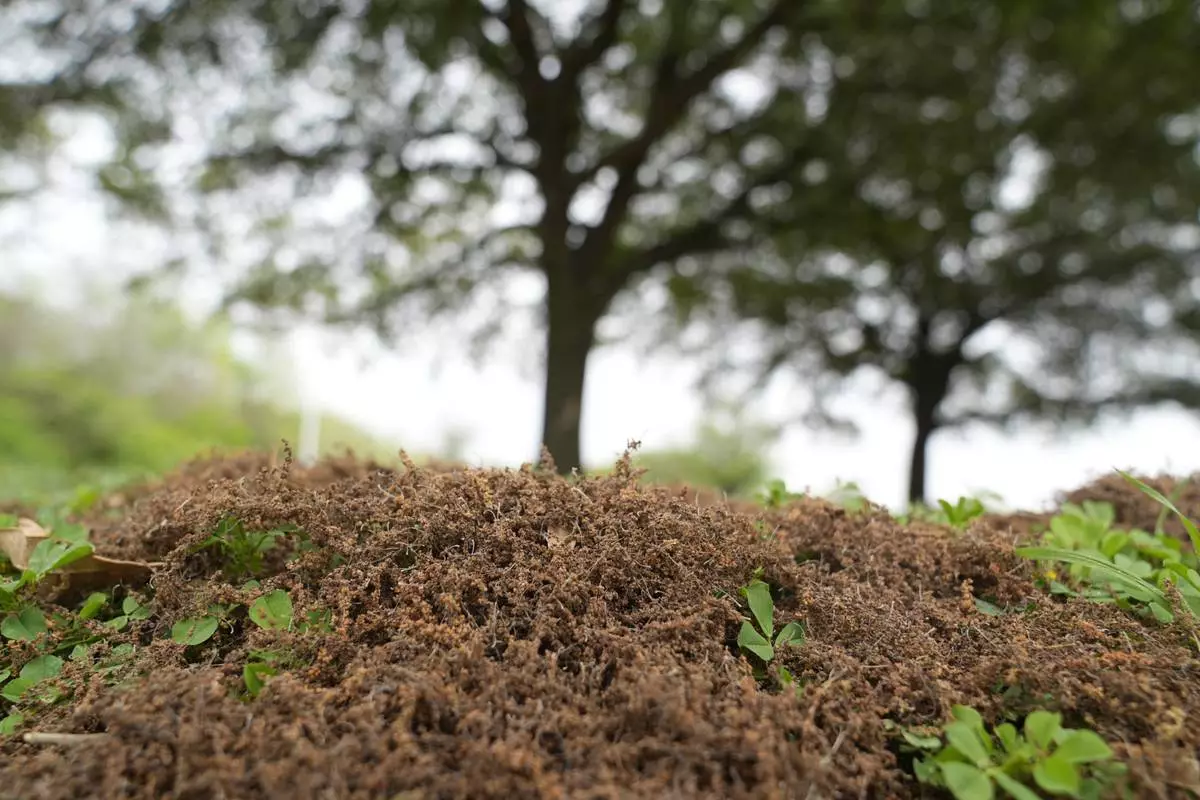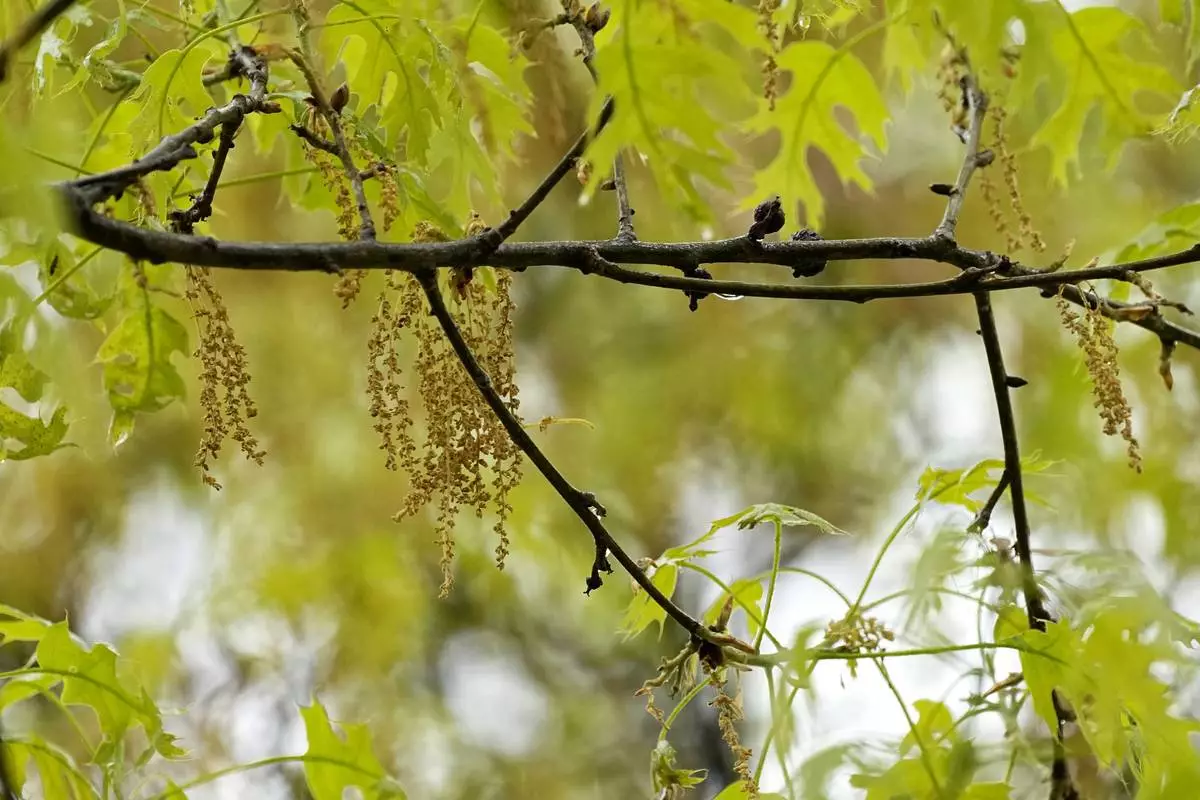International aid group Doctors Without Borders said its field survey has found at least 6,700 Rohingya Muslims were killed between August and September in a crackdown by Myanmar's security forces.
The group, known by its French acronym MSF, said in a statement made available Thursday that it conducted the survey in refugee camps in Bangladesh. It estimated that at least 9,000 Rohingya had died of various causes in Myanmar's Rakhine state between Aug. 25 and Sept. 24, and that more than 70 percent of the deaths were the result of violence.

FILE - In this Sept. 25, 2017, file photo, Rohingya Muslims, who crossed over from Myanmar into Bangladesh, wait to receive aid during its distribution near Balukhali refugee camp, Bangladesh. International aid group Doctors Without Borders said Thursday, Dec. 14, 2017.(AP Photo/Dar Yasin, File)
According to MSF, the dead included at least 730 children younger than 5.
More than 630,000 Rohingya Muslims have fled Buddhist-majority Myanmar into Bangladesh to escape what the United Nations has called "ethnic cleansing."
"The peak in deaths coincides with the launch of the latest 'clearance operations' by Myanmar security forces in the last week of August," MSF medical director Sidney Wong said in a statement.
She said the findings were staggering, both in terms of the numbers of people who reported a family member dead as a result of violence and the horrific ways in which they said they were killed or severely injured.
MSF said that among children below the age of 5, more than 59 percent who were killed during that period were reportedly shot, 15 percent burnt to death in their homes, 7 percent beaten to death and 2 percent died due to land mine blasts.
Myanmar's Information Ministry has said that 400 people died following attacks by a militant Rohingya group on police posts on Aug. 25. It said most of the 400 were "extremist terrorists" who died during military "clearance operations."
International aid and rights groups have accused the military of arson, killings and rapes of Rohingya villagers. Myanmar authorities have blamed Rohingya militants for the violence.
More than 1 million ethnic Rohingya Muslims have lived in Myanmar for generations. They have been stripped of their citizenship, denied almost all rights and labeled stateless.
Since the Myanmar's military conducted operations against the Rohingya in Rakhine state, the civilian government has barred most journalists, international observers and humanitarian aid workers from independently traveling to the region.
MSF said the number of deaths is likely to be an underestimation "as we have not surveyed all refugee resettlements in Bangladesh and because the surveys don't account for the families who never made it out of Myanmar."
Allergy season can bring misery to tens of millions of Americans each year.
Tree, grass, and other pollens can cause runny noses, itchy eyes, coughing and sneezing.
Where you live and what you're allergic to can make a big difference in how bad your allergies are, but there are many things you can do to feel better.
Here are some tips from experts to keep allergies at bay — maybe even enough to allow you to enjoy the outdoors.
There are three main types of pollen. Earlier in the spring, tree pollen is the main culprit. After that grasses pollinate, followed by weeds in the late summer and early fall.
Some of the most common tree pollens that cause allergies include birch, cedar, cottonwood, maple, elm, oak and walnut, according to the Asthma and Allergy Foundation of America. Grasses that cause symptoms include Bermuda, Johnson, rye and Kentucky bluegrass.
The best and first step to controlling allergies is avoiding exposure. That’s easier said than done when it's nice out.
Start with keeping your windows closed at home and in the car, avoiding going out when pollen counts are highest and changing clothes when you get home. The same masks that got us through the pandemic can protect you from allergies — though they won't help with eye symptoms.
Pollen trackers can help with planning. The American Academy of Allergy Asthma and Immunology tracks levels through a network of counting stations across the U.S. Counts are available at its website and via email.
You can't fight an enemy you don't know.
Since many Americans are allergic to several things at once, the first thing to figure out is what specifically you’re allergic to, said Dr. Nana Mireku, an allergist in the Dallas-Fort Worth area.
Over-the-counter nasal sprays can help relieve symptoms, but they take a while to kick in, so it’s best to start them in early in the season, said Dr. Rachna Shah, an allergist and director of the Loyola Medicine Allergy Count.
Antihistamines are another option. Shah said she’s seen some patients benefit from switching to a similar brand if one stops working, but said that there isn’t much broader data to back the recommendation.
For young children and people who have to take many different allergy medications, immunotherapies in the form of shots and oral drops can help desensitize the immune system to allergens, treating symptoms at their root.
The Asthma and Allergy Foundation of America issues an annual ranking of the most challenging cities to live in if you have allergies, based on over-the-counter medicine use, pollen counts and the number of available allergy specialists. This year, the top five were Wichita, Kansas; Virginia Beach, Virginia; Greenville, South Carolina; Dallas; and Oklahoma City.
If you've been thinking it started earlier and seems longer this year, you're on to something.
Shah usually starts looking at pollen counts in the Chicago area in April. But this year, she peeked at her data in mid-February, and tree pollen was already at a “moderate” level.
“This season has been so nuts,” she said. “Granted, it was a pretty mild winter, but I didn’t expect it to be so early.”
Shah said she believes this season will be longer than other years, assuming the weather remains warm.
Experts say climate change has led to longer and more intense allergy seasons.
The Associated Press Health and Science Department receives support from the Robert Wood Johnson Foundation. The AP is solely responsible for all content.

FILE - Tree pollen pods lay in a pile at a park in the Dallas suburb of Richardson, Texas, Thursday, March 21, 2024. The Asthma and Allergy Foundation of America issues an annual ranking of the most challenging cities to live in if you have allergies, based on over-the-counter medicine use, pollen counts and the number of available allergy specialists. In 2024, the top five were Wichita, Kansas; Virginia Beach, Virginia; Greenville, South Carolina; Dallas; and Oklahoma City. (AP Photo/LM Otero, File)

FILE - An oak tree with new leaf growth also shows pollen and a drop of water hanging among the branches at a park in Richardson, Texas, Thursday, March 21, 2024. There are three main types of pollen. Earlier in the spring, tree pollen is the main culprit. After that grasses pollinate, followed by weeds in the late summer and early fall. (AP Photo/Tony Gutierrez, File)












